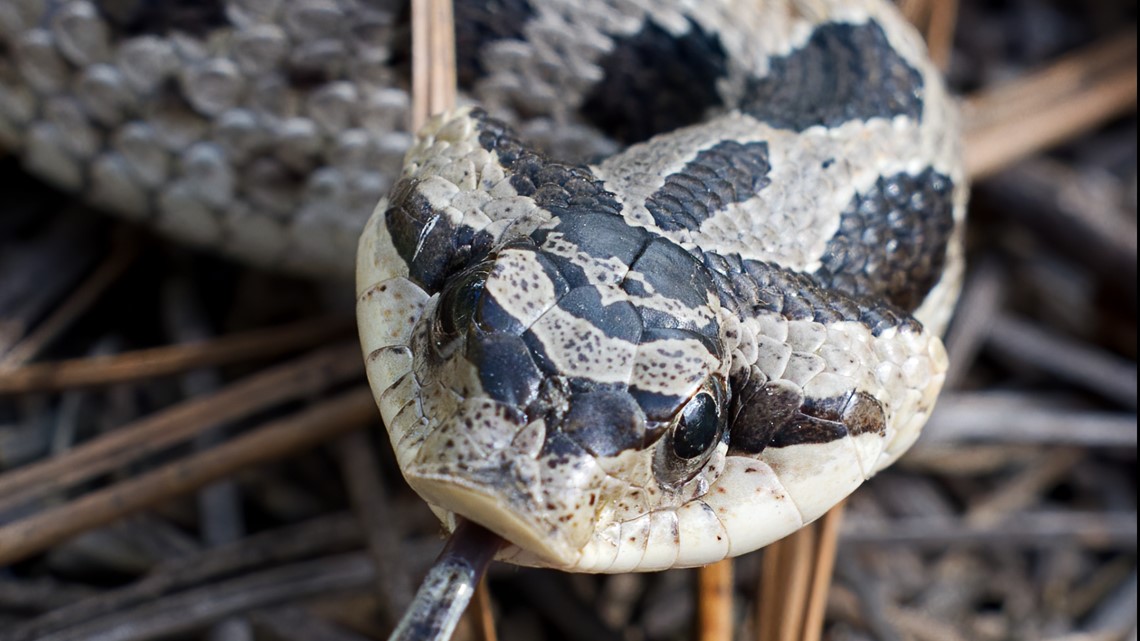ATLANTA — A new lawsuit announced Thursday is aiming to have the southern hognose snake, which is native to Georgia and several other states, declared an endangered species.
The suit, filed by the Center for Biological Diversity, alleges the U.S. Fish and Wildlife Service under the Trump administration improperly denied the southern hognose snake endangered status after a review in 2019.
According to the advocacy group, the snake has seen population declines of roughly 60% and already has disappeared entirely from Alabama and Mississippi. In addition to Georgia, the snake is found primarily in Florida and the Carolinas.
According to the Florida Museum, the non-venomous snake tends to grow to about 18-22 inches and for the most part is found in forested habitats such as scrub, high pine woodlands, dry river floodplains and hardwood hammocks.
The Center for Biological Diversity says its ecosystem has been reduced by as much as 97%, with the lawsuit highlight ongoing threats to the population such as "timber harvest, urbanization, habitat fragmentation, road mortality, climate change, invasive species, the commercial pet trade and disease."
The suit contends the snake is "among the rarest and most threatened snake species in North America" and cites cites U.S. Fish and Wildlife Service estimates that "only a quarter of historic populations could remain in the foreseeable future."


“The southern hognose snake is in desperate need of protection to avoid extinction,” Chelsea Stewart-Fusek, an endangered species attorney at the Center for Biological Diversity, said in a statement. “The Trump administration ignored the science when it decided not to protect these snakes. The Service has to correct its errors if this unique species is ever going to recover.”
Stewart-Fusek added that the snake is fascinating for several reasons, among them an adaptation to dig burrows for survival and freezing in place or playing dead when threatened.
"It is fossorial, spending most of its time underground in burrows it creates with its unique, upturned snout, and is adapted to living in the sandy, fire-dependent forest communities of North Carolina, South Carolina, Georgia, Florida, Alabama and Mississippi," the suit notes.
The Center for Biological Diversity petitioned Fish and Wildlife to have the snake designated as endangered in 2015. They allege in the suit that the 2019 rejection, the agency "flouted the (Endangered Species Act)'s mandate that the agency rely solely on the best available science when making listing determinations, for it discounted all but two of the numerous threats the species faces."
"Indeed, in its explanation for why it found that the snake does not warrant listing, the Service relied solely on the results of a model that did not analyze, for instance, the impacts of timber harvest; habitat fragmentation; road mortality; climate change-induced weather events such as drought and storms; invasive species; human persecution and harassment; collection for the pet trade; or disease—all threats the Service itself identified as important factors impacting the snake’s continued existence," the suit states.
The lawsuit is looking for a federal judge to declare the Fish and Wildlife decision from 2019 unlawful and "order the Service to issue a new listing determination" for the snake. The suit was filed in the federal district court in Washington, D.C. and names both Fish and Wildlife, the agency's director Martha Williams and U.S. Secretary of the Interior Deb Haaland as defendants.

